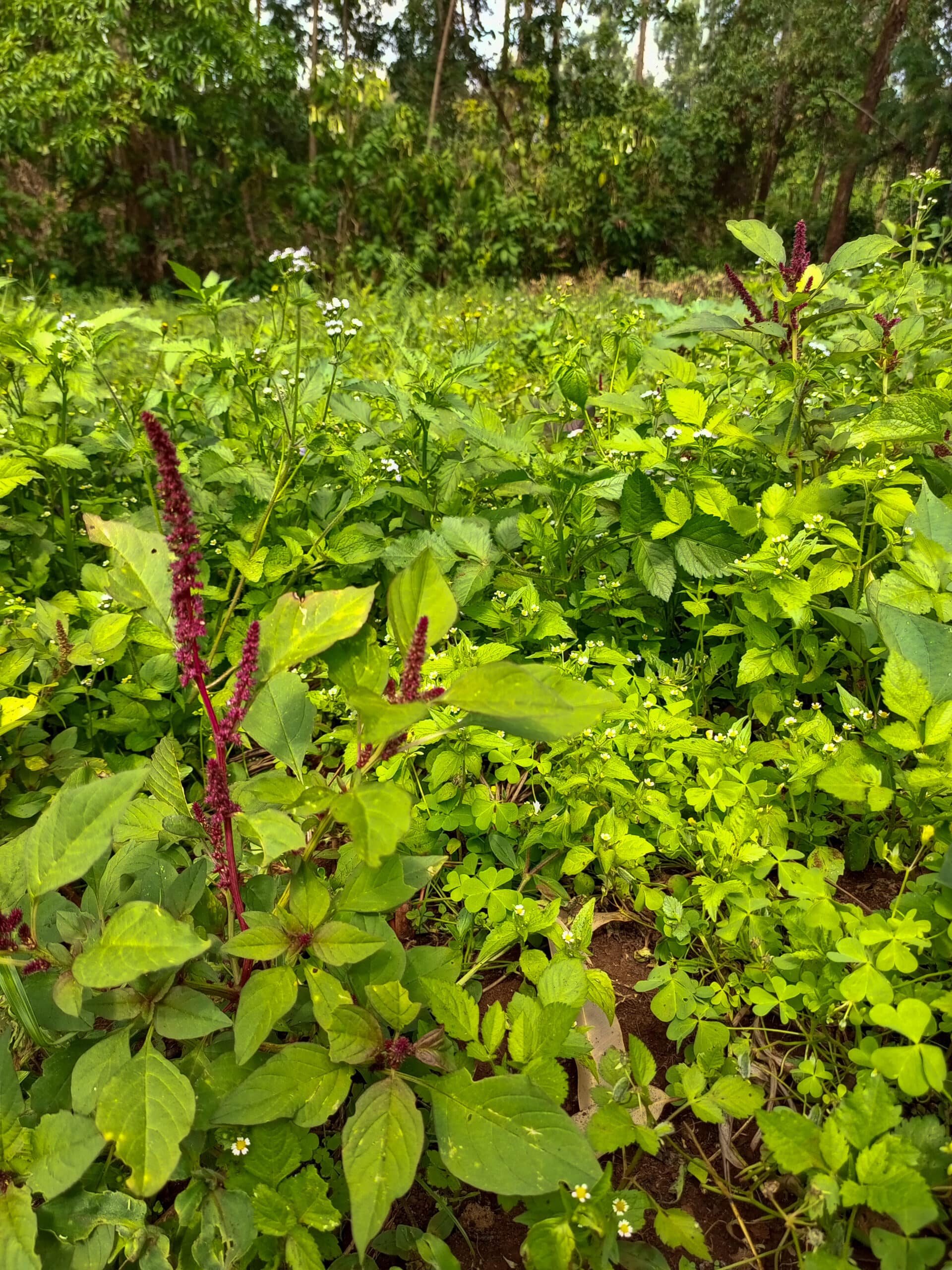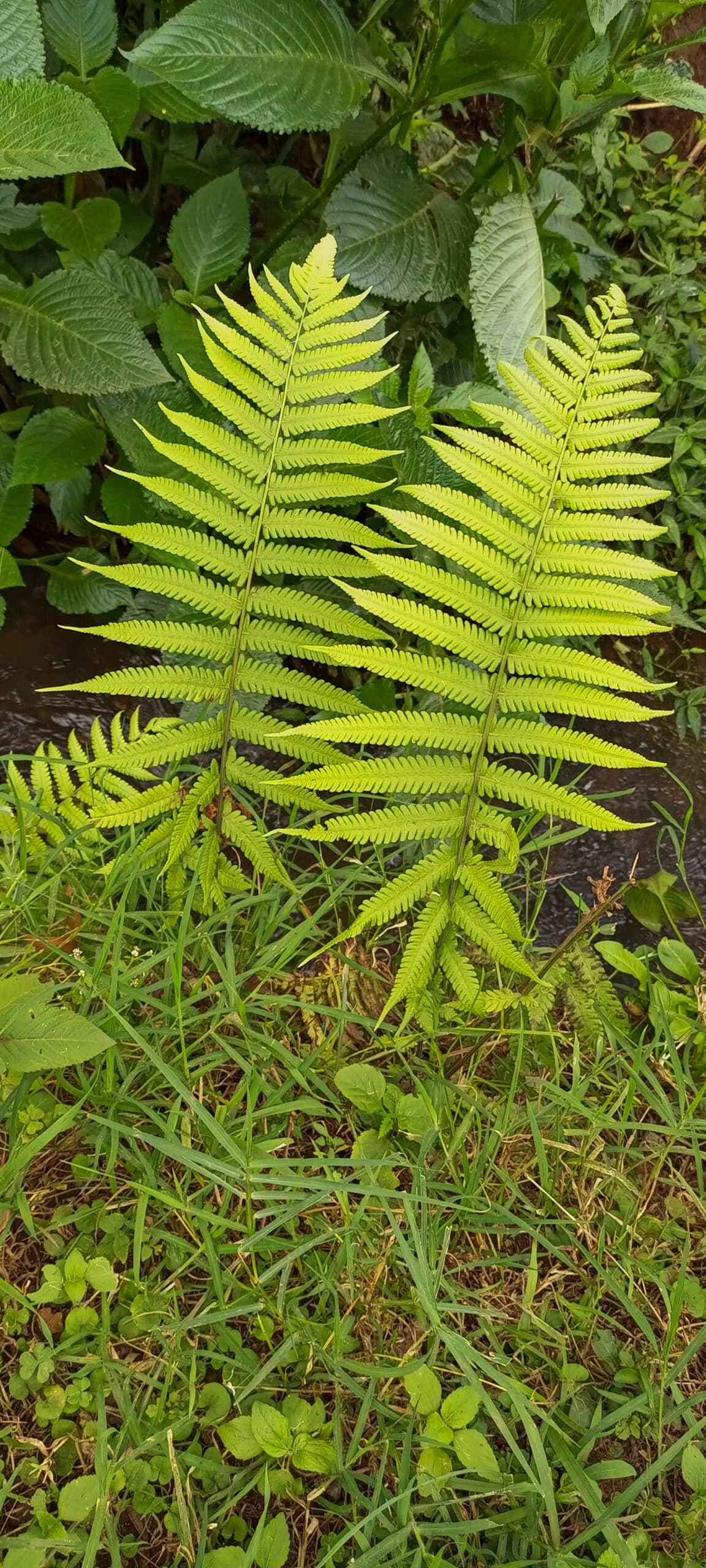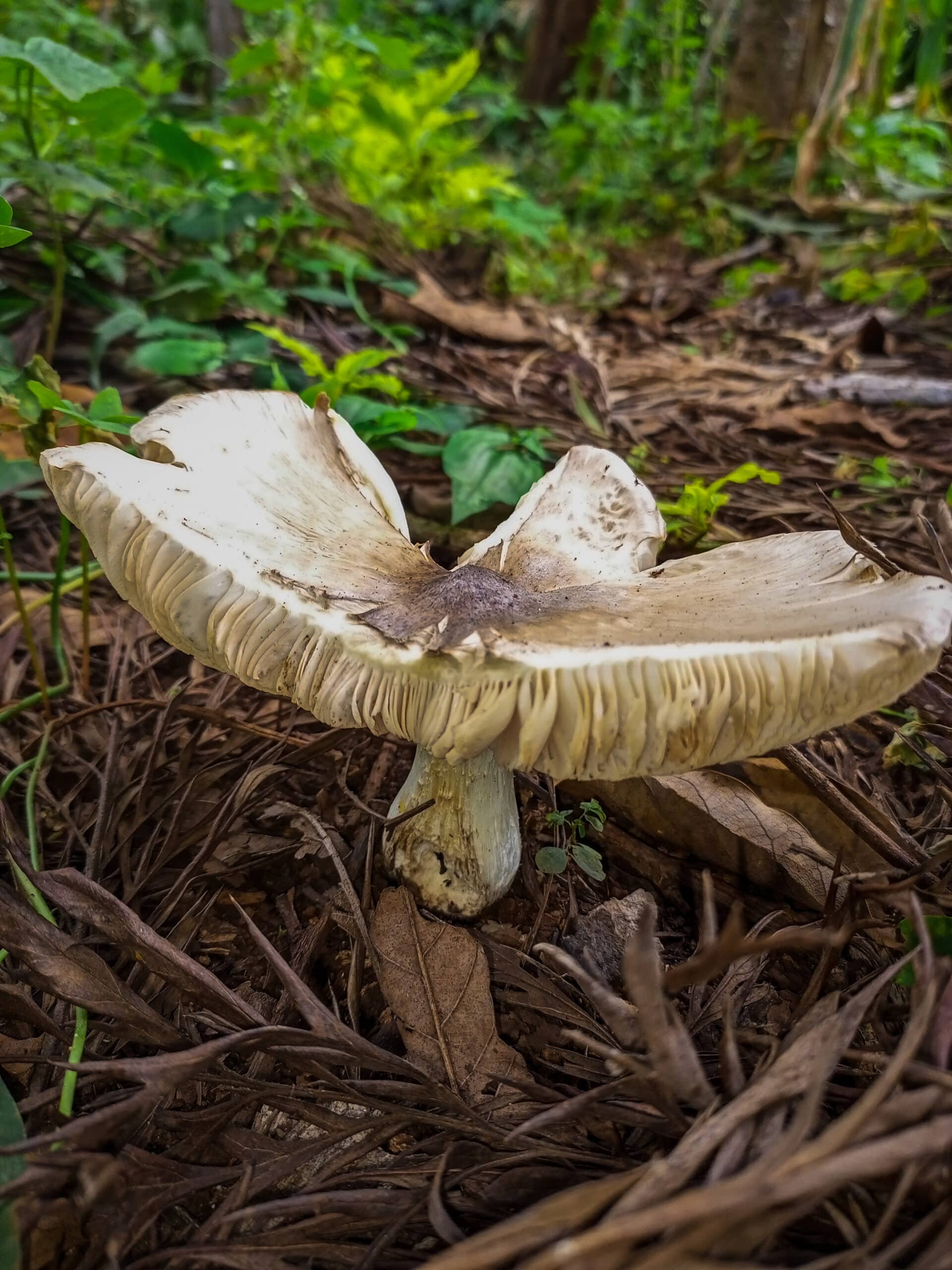In my corner of the world, the farms are full of young maize and beans. The mango trees are heavy with fruit while the purple flowers of the Jacaranda trees pave the roads.
The rains have tapered off, but the birds must have enough water as they are yet to visit the water bowl, I put out for them. And just a short walk from home, the stream is full and the ferns that grow alongside it are a vibrant shade of green.

Wild field with amaranth blackjacks sowthistle and woodsorrel. Picture credits: Cindy Muthike
First foraging find
I write to you from Kirinyaga, a two-hour drive from Kenya’s capital, Nairobi. It is on this landscape that I have nurtured a love of foraging. I remember my first find fondly. It was January of last year, the sun was shining high in its zenith as my family and I drove past a small country town on our way home. Suddenly the car broke down. Coincidentally this happened right next to a mechanic’s workshop. We knew it was going to be a long wait.
As we sought shelter from the heat, I caught a glimpse of a plant from the corner of my eye that seemed to be growing out from underneath a pile of old tires. I walked over for a closer look and although it was grimy, it was unmistakably broadleaf plantain, an edible and medical herb.
While I couldn’t harvest the plantain leaves because the area was most likely contaminated, I was elated!

Ferns along a stream. Picture credits: Cindy Muthike
Foraging
At its simplest, foraging is the practice of finding wild edible foods and is rooted in respect and gratitude for the land. But earlier this year, I read novelist Richard Powers’ interview in Atmos magazine that challenged me to go a step further.
In the interview, he asks: “How many of us can name even a dozen indigenous species to the place that we live? How many of us can say, on a given day, what the plants, trees, flowers, and animals around them are doing and needing?”
I mulled over his words and realized that while I had foraged for nasturtiums – a herbaceous flowering plant – and plantain I hadn’t been very intentional in immersing myself in the ecosystem. I felt a yearning to connect with the ecosystem and truly, as Powers puts it, live where I lived.
Vibrant landscapes
I began to notice that beyond the farms and homesteads where I live, is where the landscape feels the most vibrant. I see the bees moving through the wildflowers in the afternoons and notice the beauty of the abundant red amaranth juxtaposed against the dainty white and yellow flowers of the blackjack.
My perspective on weeds has shifted. I now understand that I cannot judge a plant’s usefulness by its edibility alone. Each one is purposeful and serves the larger ecosystem in ways I cannot fully comprehend. When I look at them, I see relationships and resilience. In those moments, I feel enchanted with the earth.
I know now that the best time to forage the termitomyces mushroom is around July. And although I have not once found a dandelion, the almost identical sow thistle with its many striking yellow flowers emerging out of a single stalk is a wonderful compromise. Knowing these things makes me feel empowered and a part of it all.

Bee flying to a blackjack flower. Picture credits: Cindy Muthike
Biggest challenge
So far, my biggest challenge has been a lack of local foraging field guides. My people, the Agikuyu, passed down knowledge via word of mouth but with colonialism, these threads of knowledge were interrupted. While the word ‘foraging’ may be new to us, foraging as a practice is not. My challenge, therefore, is not a lack of information but finding this knowledge in a compiled format.
I have since been lucky enough to find a Kikuyu botanical dictionary and although not a foraging guide, it has proven quite useful.
The challenge also presents an opportunity to build new connections and start conversations. Several months ago, I found a young Reishi mushroom growing out from the side of a tree stump, I followed that trail to find a fully mature Reishi on another tree stump close by.
I was ecstatic! I took pictures and sent them via Instagram to a mushroom farmer in Nairobi seeking confirmation. It was our first interaction, but he not only responded excitedly with a positive confirmation he also advised on when and how to harvest them. I also learned of his foraging trips and made plans to join him.

Ermitomyces mushroom Kirinyaga Kenya. Picture credits: Cindy Muthike
Reconnecting with indigenous knowledge systems
Foraging for me is now also about reconnecting with indigenous knowledge systems, rebuilding kinship with our land, and also with each other. If we are familiar with our plants, fungi, and animal kin, we are much more likely to protect them.
It is also about slowing down in an increasingly fast-paced world. Finding joy in being outside is a kind of resistance to all the negativity and is itself an act of environmental activism.

